Definition of Elevator Speed
Elevator speed can be defined as the distance an elevator travels in a given amount of time. This is usually measured in meters per second (m/s), feet per minute (ft/min), or even kilometers per hour (km/h). This metric basically tells you just how fast your elevator is going.
Factors that determine elevator speed usually include the type of elevator, the height of the building, the number of stops and the distance between different floors. For instance, larger elevators might be slightly slower while elevators with fewer stops tend to be faster.
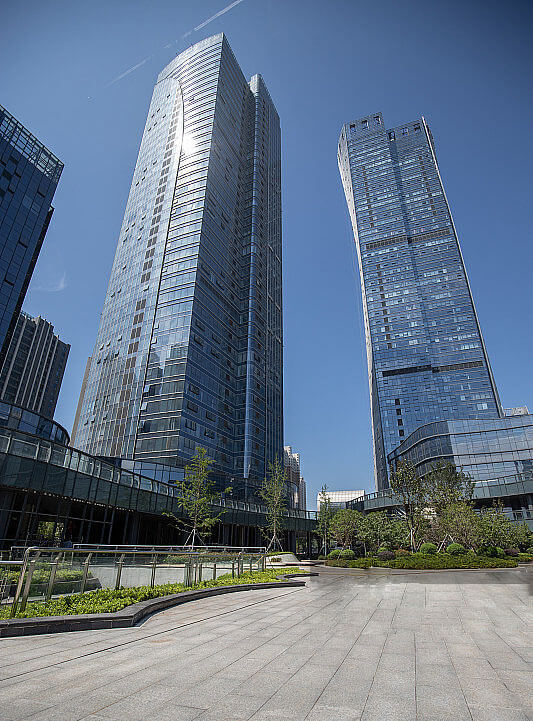
Types of Elevator and their Speeds
As mentioned above, each type of elevator has its unique speed and capacity. This is usually based on the elevator’s purpose and the environment within which it operates. Below are the major types of elevators and their average speeds.
| Elevator Type | Capacidade | Most Commonly Speed | Max. Speed |
| elevador de passageiros | 450-1600kg | 1.0-7.0m/s | 20m/s |
| Freight/Cargo Elevator | 1000-10000kg | 0.25-1.0m/s | 1m/s |
| elevador de carro | 3000-5000kg | 0.25-1.0m/s | 1m/s |
| elevador hospitalar | 1600kg | 1.0-3.0m/s | 3m/s |
| Elevador residencial | 250-400kg | 0.4-0.63m/s | 0.63m/s |
1. Passenger Elevators
If you have used a lift recently, it was most likely a elevador de passageiros. The speed of a typical passenger elevator ranges from 1.0 to 7.0 meters per second. They are designed to carry loads from 450 to 1600 kilograms. These are the elevators we use most often when moving around between floors in an office building or an apartment complex. They are the busy bees of the elevator world. They balance speed and efficiency to keep people moving smoothly and efficiently.
2. Freight or Cargo Elevators
Cargo elevators are sturdy because they are built to handle serious weight. Most freight elevators also move slowly compared to elevators that convey people. The speeds are usually between 0.25 to 1.0 meters per second. Think of them as the reliable workhorses of the building, shifting goods efficiently, although at a slow and steady pace. A typical cargo elevator can carry weights up to 10,000 kilograms and endure tougher working conditions.
3. Car Elevators
These are another interesting type of elevator made to transport vehicles within parking structures. They move at about the same speed as freight elevators, clocking in at 0.25 to 1.0 meters per second. They basically accommodate weights from 3000 to 5000 kilograms. It’s like giving your car its own private lift.
4. Hospital Elevators
These specialized elevators are made to convey patients, medical staff and medical equipment swiftly and smoothly. These elevators support weights of around 1600 kilograms and operate at speeds of 1.0–3.0 meters per second. The main goal here is to ensure a timely response in critical situations.
5. Home Elevators
Perfect for private residences, these personal lifts carry between 250 to 400 kilograms and operate at a gentle 0.4 to 0.63 meters per second. They’re designed for aesthetics, comfort and safety, offering a cozy lift between floors in your own home.
Different Elevator Speeds
From leisurely to more rapid rides, elevators come in all speeds to suit every building’s unique usage and purpose.
Low-Speed Elevators: These are reliable and laid-back, quite perfect for residential buildings. They cruise along at about 0.4-1.0 meters per second, giving you plenty of time to check your messages or enjoy the ride without any rush. These elevators are all about comfort and safety in a cozy environment.
Medium-Speed Elevators: These elevators step up the speeds a little bit. They usually buzz through office buildings at speeds of between 1.0-3.0 meters per second. They are popularly known for balancing efficiency, safety and comfort as they keep everyone on schedule.
High-Speed Elevators: Just like the name suggests, these elevators are all about speed. You’ll usually see them in tall buildings, zooming people between floors at impressive speeds of 3.0 to 7.0 meters per second. The main idea is to keep things fast and efficient, making sure everyone gets where they need to go quickly.
Ultra-High-Speed Elevators: Here we have the rockets of the elevator scene. These super elevators move up at over 10 meters per second. These elevators are the tech marvels, perfect for cities where skyscrapers abound and efficiency is prioritized. To understand these speeds practically, consider an average elevator traveling at 3 m/s: This means that it could reach the 30th floor of a building in approximately 10-12 seconds.
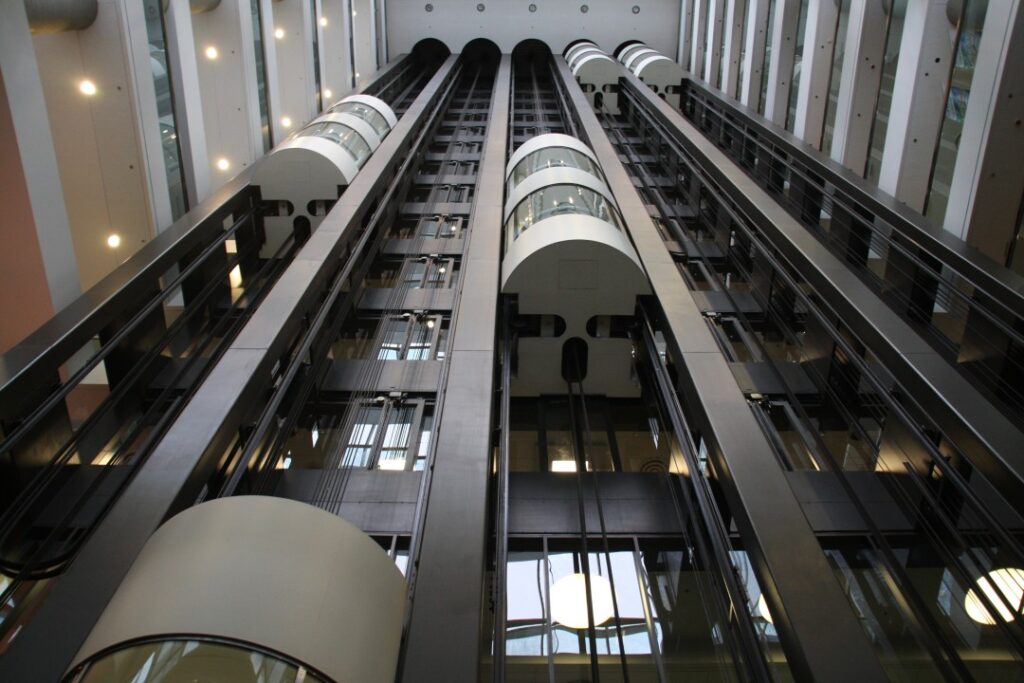
5 Factors That Determine Elevator Speed
The speed of an elevator is influenced by several factors that also ensure that it functions safely and efficiently. Engineers and architects consider and balance all these factors, in order to select the right elevator for any project. Here are 5 factors that influence how fast an elevator can go:
Building height and its usage: Taller buildings basically need faster elevators. High-speed elevators are therefore quite common in skyscrapers and commercial high-rise buildings because they can whisk passengers up several hundred meters in mere seconds. On the other hand, a cozy office building with just a few floors will need a more modest-paced lift, providing a comfortable ride without the need for speed. The building usage is also as important as the height in deciding on elevator speed. For example, in a bustling office tower, the volume of people needing to switch floors quickly during peak times, like the morning rush or lunch hour, demands elevators that are not only fast and resilient but also efficient in handling high passenger movement. This is in contrast to a residential home elevator which doesn’t see as much frequent usage. Home elevators are therefore designed for a steadier pace, prioritizing a smooth and comfortable ride for residents rather than speed.
The type and capacity of the elevator: Elevator speed is also dependent on the type of elevator and the capacity of the elevator. Passenger elevators in a busy commercial center, for instance, need high-speed elevators that can move quickly and handle high traffic efficiently. Freight elevators on the other hand are built to haul heavy goods such as machinery, and equipment, moving them from point A to B in good condition. Since they are carrying all this weight, they move at a slower pace compared to passenger elevators. The reason for this slower speed is primarily the safety and stability of the cargo because accelerating too quickly while hauling heavy loads weighing thousands of kilograms could create instability or even damage the cargo.
Technology and innovation: These are also game-changers in elevator speed. Advanced systems use sophisticated algorithms and magnetic levitation to achieve super speeds. For example, it is as a result of cutting-edge technology that the Shanghai Tower elevators are able to reach speeds of 20.5 meters per second. The use of regenerative drives, which recycle energy, also makes movement more energy-efficient.
Building regulations and safety standards: Elevator safety standards also play a big role. Elevators need to comply with stringent safety codes, like the ASME A17.1/CSA B44 standards in North America, which may dictate speed limits based on the elevator’s environment and intended use.
Passenger comfort and experience: This is very important because the passengers are the end users and their comfort is the goal. While faster might seem better, most users appreciate a smooth ride without abrupt starts or stops, particularly in residential buildings. A smooth, slower-paced ride ensures passengers can comfortably check emails or chat without feeling unsettled by the swift motion.
The 5 Fastest Elevators in the World
Since we’re on the topic, we might as well go ahead and look at some elevators that are truly pushing the limits of vertical travel. These are the top five speedsters that redefine how fast we can actually move between building floors:
Shanghai Tower, China
Boasting the fastest elevators in the world, the Shanghai Tower’s elevators zip passengers up at a breathtaking 20.5 meters per second (m/s). The Nexway lift in the Shanghai Tower can travel up to 118 storeys in 55 seconds. Now, that’s like traveling the length of a football field in a mere few seconds! These elevators are a marvel of modern engineering, seamlessly integrating cutting-edge technology to move people quickly while maintaining a smooth ride. It is not surprising therefore that they currently hold the Guinness World Records for the tallest elevator in a building and the fastest double-deck elevator.
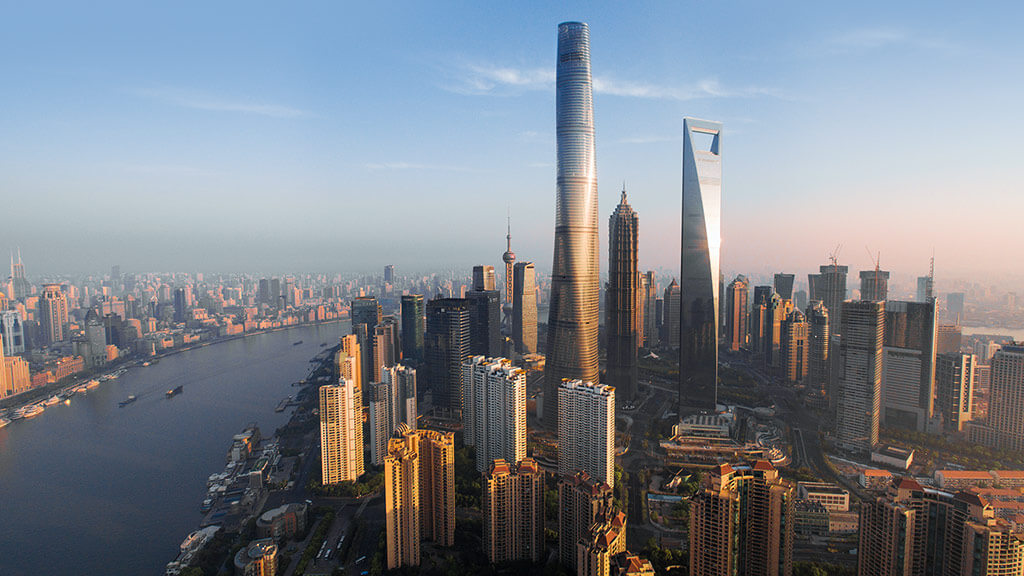
Guangzhou CTF Finance Centre, China
Close on the heels of Shanghai Tower, this skyscraper’s elevators peak at an impressive 20 m/s. Designed by Hitachi, these elevators demonstrate how technology can meet the demands of one of the world’s tallest buildings without compromising on safety or comfort. The capsule structure traction lift in the Guangzhou CTF Finance Centre can travel 72 kilometers per hour which translates to 95 floors in 45 seconds.
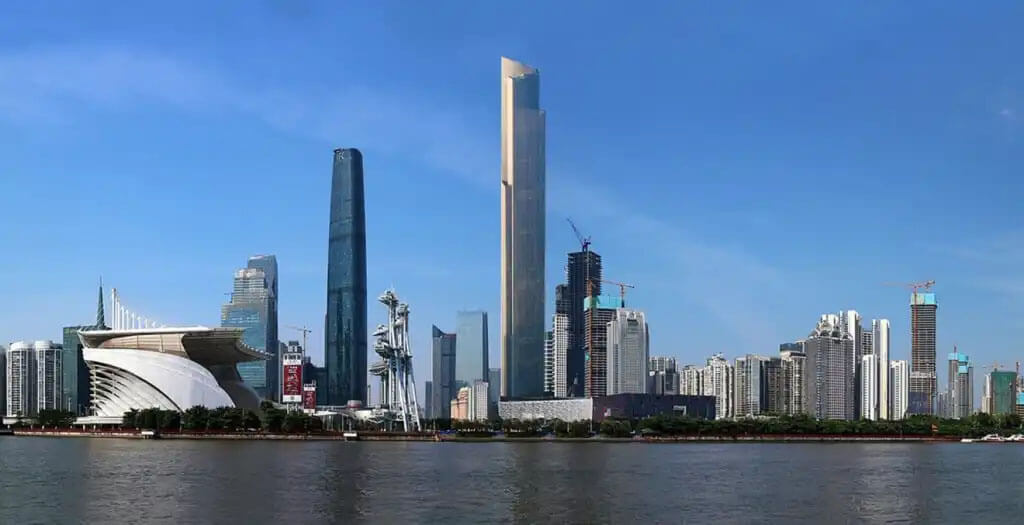
Taipei 101, Taiwan, China
For years, Taipei 101 held the title for the fastest elevators, speeding along at 16.83 m/s. Although it now sits at number 3, these elevators are still very famous for their swift journeys from the ground floor to the observation deck. They are also equipped with technology that maintains stability and reduces ear discomfort during rapid ascents and descents.

Yokohama Landmark Tower, Japan
Moving passengers at a brisk 12.5 m/s, the Yokohama Landmark Tower is one of the fastest elevators in the world as well. These elevators, developed by Mitsubishi Electric, are notable for their precision and reliability and give visitors a quick yet scenic trip up to the sky garden on the 69th floor.
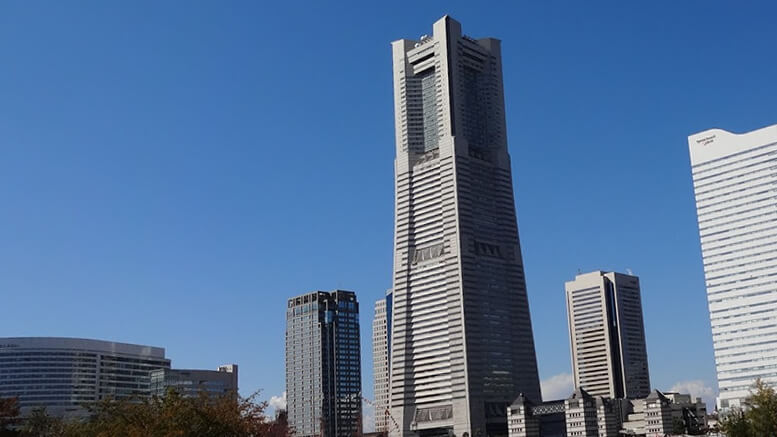
Burj Khalifa, United Arab Emirates (UAE)
At number 5 we have the Burj Khalifa’s elevators. While not the fastest, the Burj Khalifa’s elevators are among the tallest serving elevators globally, climbing at 10 m/s. These elevators are designed to travel long distances smoothly, carrying visitors from the base to the observation deck seamlessly within just a minute.
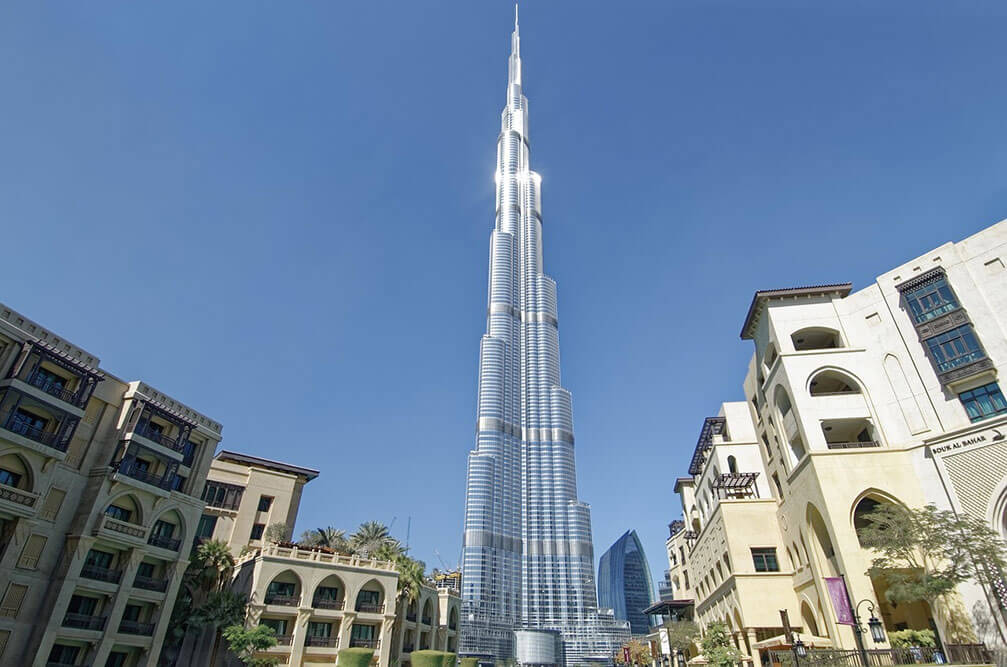
Safety Measures in High-Speed Elevators
When we think about high-speed elevators, safety is always an important consideration. In case you’ve been wondering, you may be reassured to note that elevators don’t just zoom to their top speed right away. They gently pick up speed to ensure everyone onboard is safe since going too fast can be risky. To keep passengers protected, elevator engineers have designed some top-notch safety features which we will discuss in this section in no particular order.
First on our list is the speed governor, a device that is designed to regulate the elevator’s speed. If an elevator exceeds its safe limits, the speed governor immediately triggers the emergency brakes, preventing potential overspeed accidents.
Secondly, there are buffer systems at the bottom of the elevator shaft. These are like cushioning that helps to absorb impact in the rare event that the elevator descends too sharply. It’s an added layer of safety at the ground level.
Thirdly, we have the door safety system. Elevators are equipped with sensors that prevent the doors from closing if something—or someone—is in their way, ensuring people can enter and exit safely without the risk of getting caught. This is an important safety consideration for elevators that make frequent stops with passengers getting off and on briskly.
Fourth on our list of safety features are the backup power systems. These are crucial in case of a power outage, ensuring that the elevator doesn’t suddenly stop between floors. This system lets the elevator move to the nearest floor and open the doors so passengers can exit safely.
Finally, regular inspections and drills are a key part of maintaining elevator safety. Inspections and drills ensure that all the elevator systems are working perfectly and that any potential issues are discovered and managed early. With all these measures in place, high-speed elevators can remain quick and efficient while keeping passenger safety as their number one priority.
Choosing the Right Elevator Speed for your Building
From all indications, picking the right speed for an elevator is a bit like matchmaking—it needs to fit perfectly with the building’s personality. First, think about the type of building that will house the elevator. Is it a bustling office tower where people are always in a rush, a hospital, or a cozy apartment building where everyone moves a bit more leisurely?
Secondly, consider the height. Taller buildings generally need faster elevators to get people where they’re going without a long wait. Traffic flow is another factor to consider. Some buildings have peak times, like when everyone arrives for work or leaves for lunch, while others might have a steadier pace throughout the day. You wouldn’t want to wait forever for an elevator when you’re in a hurry, right?
To determine the best speed for your elevator, it is smart to chat with experts. Elevator professionals like those at Dazen Elevatoré can guide you through the process. They have the requisite knowledge and skills to ensure that you make the right elevator choice and ensure that everything runs just right.
In summary, elevator speeds vary, depending on the height of the building, the elevator type and purpose as well as a few more factors discussed above. We also looked at the mechanisms that keep elevators running smoothly as well as the kings of elevator speed. If you’re looking for the perfect blend of speed, comfort, and reliability, consider reaching out to the experts at Dazen Elevators. Visit Dazen Elevators to explore their offerings and seek a consultation. It is best to let the pros handle the details and ensure you have a fast, smooth, and safe elevator ride, every single time.
